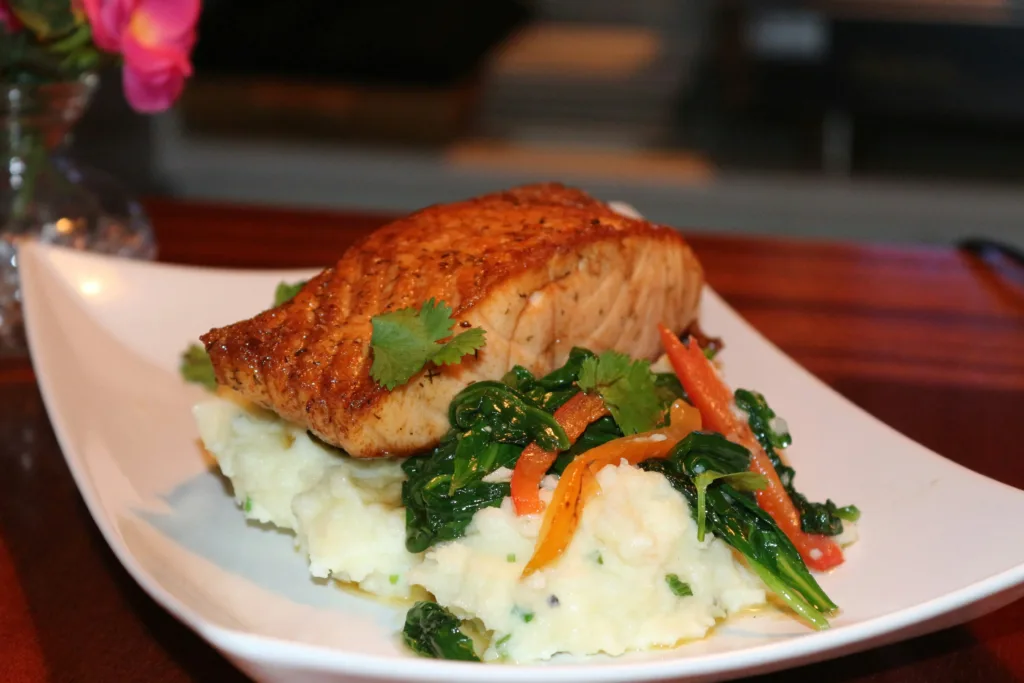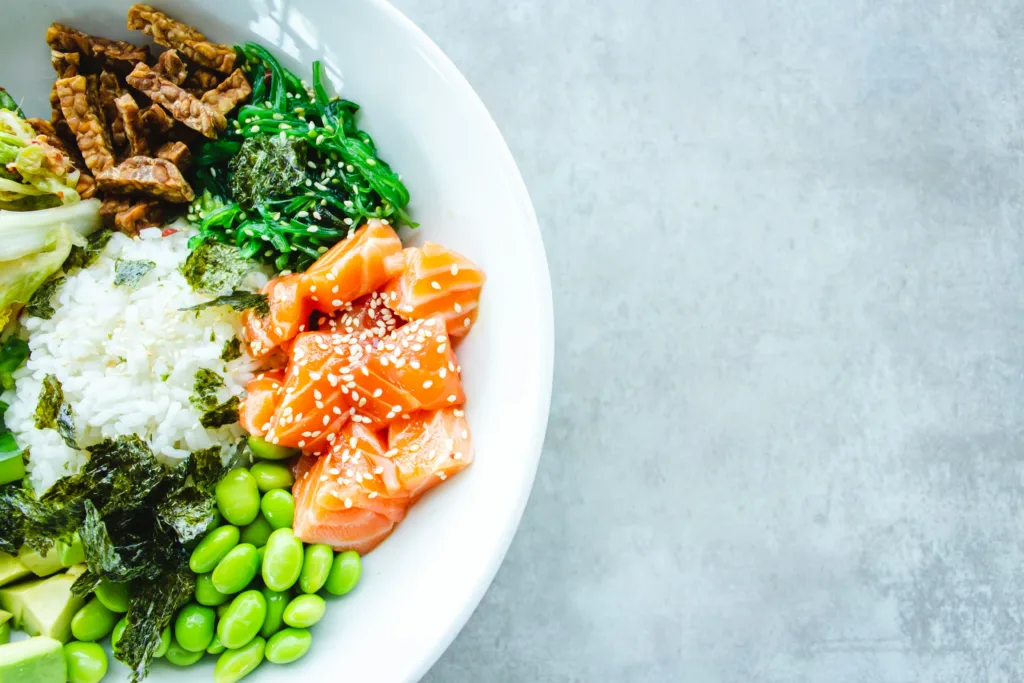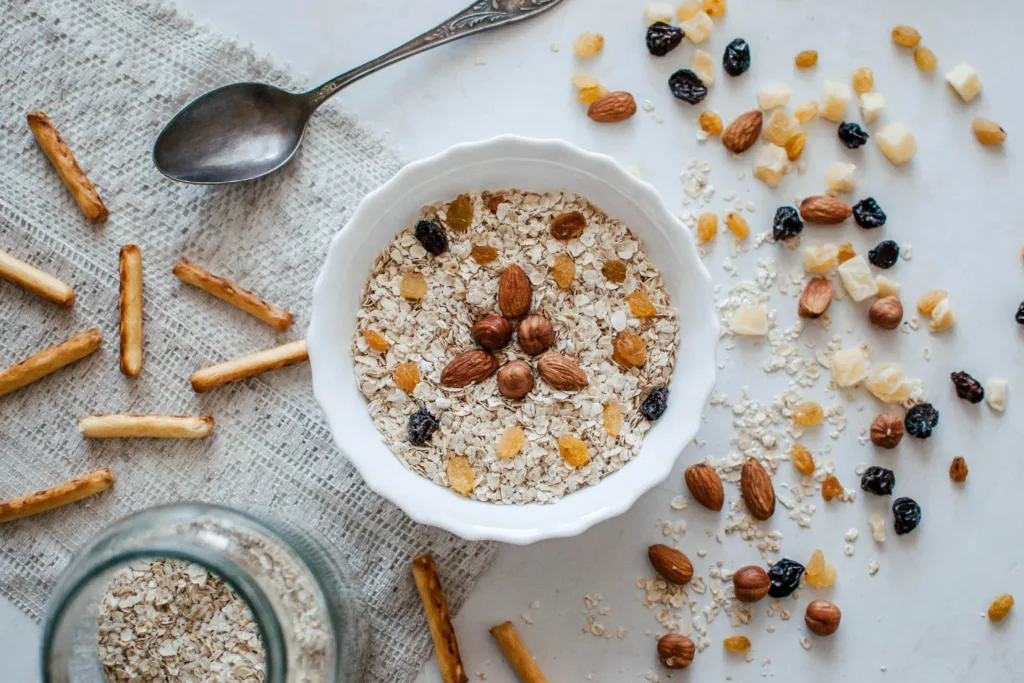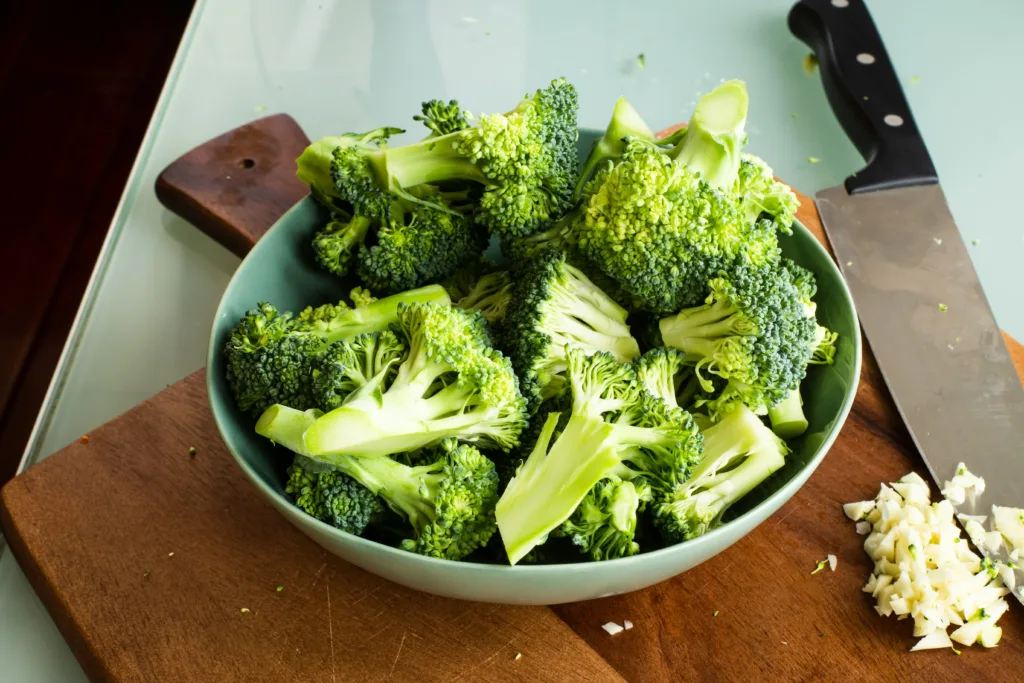If you’ve ever hit a wall with your diet, you’re not alone. At first, the weight drops. Then, for no clear reason, progress slows down. You’re doing everything “right,” but your body just isn’t responding anymore. That’s where metabolic confusion comes in.
This isn’t some magic trick. It’s a flexible approach to eating that alternates between higher-calorie and lower-calorie days to help keep your metabolism guessing. And no, it doesn’t involve counting every bite or swearing off carbs for life. This guide is here to explain how it works, why it might help, and how to try it without making food feel complicated again.
We built a ReciMe app to create a tool that actually makes structured eating easier, especially for plans like metabolic confusion, where your calorie needs change from day to day. Instead of juggling spreadsheets or losing track of which meal goes where, you can plan your entire week in the app, organize recipes by day and meal type, and label them as high or low-calorie. ReciMe also generates a grocery list from your selected meals, keeping things efficient whether you’re shopping for light days or heavier ones. With built-in nutrition estimates and sync across mobile and desktop, it’s a simple way to stay consistent without making food feel like a chore.


What is the Metabolic Confusion Diet?
Metabolic confusion, also known as calorie cycling or calorie shifting, is exactly what it sounds like. The idea is to rotate your daily calorie intake so your body doesn’t get too comfortable. One day you eat more. The next, you scale back. It’s about mixing things up in a smart way.
Why does this matter? Because when you eat the same reduced number of calories every single day, your body adapts. That’s what metabolism does best. It learns to do more with less. But over time, that can slow weight loss and leave you feeling stuck. By alternating calorie levels, you can potentially avoid that slowdown and still stay in a calorie deficit overall.
There’s no strict formula. Some people alternate every other day. Others do three low-calorie days followed by one or two higher ones. The pattern isn’t as important as the change itself.

How Does Calorie Cycling Work?
When you restrict calories for too long, your metabolism may downshift. This is your body’s way of protecting itself from what it thinks is starvation. While that was helpful for our ancestors, it’s not so great when you’re just trying to get healthier.
With metabolic confusion, you’re still eating fewer calories over time, but not in a predictable way. That unpredictability may help:
- Prevent your body from adapting to a low-calorie diet
- Maintain a higher resting metabolic rate
- Support muscle mass by including regular high-calorie, protein-rich meals
- Improve long-term adherence because it feels less restrictive
In plain terms, you’re not letting your body fall into a routine. That gives you more flexibility and, in some cases, better results.
Who Is Metabolic Confusion For?
It’s a good fit for people who:
- Feel stuck in a weight loss plateau
- Want to avoid rigid daily calorie tracking
- Like the idea of a little more flexibility during the week
- Are okay with planning meals ahead and paying attention to portions
That said, this approach isn’t right for everyone. If you have a history of disordered eating, it may be better to avoid cycling and focus on balanced, consistent intake. And if you’re managing a medical condition like diabetes, talk to your doctor or dietitian first.

What You Can Eat: It’s Not About Elimination
Unlike keto, paleo, or Whole30, the metabolic confusion diet doesn’t restrict specific food groups. It’s all about calories and nutrient balance. You can eat:
- Lean proteins: chicken, turkey, fish, eggs, tofu
- Healthy carbs: brown rice, oats, whole wheat pasta
- Fats: avocado, olive oil, nuts, seeds
- Fiber-rich veggies: broccoli, carrots, spinach, bell peppers
- Fruits: berries, bananas, oranges, apples
- Dairy or dairy alternatives
It helps to focus on whole, minimally processed foods. But technically, nothing is off-limits. You’re just aiming to hit different calorie targets on different days.
Sample 7-Day Metabolic Confusion Meal Plan
Here’s a simple 7-day sample to show how calorie cycling might look for someone aiming to lose weight while keeping their intake realistic and enjoyable.
Day 1 (Low Calorie – 1400 calories)
Breakfast – Greek yogurt with berries and honey
Spoon some plain Greek yogurt into a bowl, top with a handful of fresh or frozen berries, and drizzle with a little honey. It’s quick, light, and hits the right balance of protein and carbs.
Lunch – Grilled chicken salad with vinaigrette
Grill a chicken breast and slice it over a bed of leafy greens. Add chopped cucumbers, cherry tomatoes, and a splash of vinaigrette. It’s filling without feeling heavy.
Dinner – Baked salmon with zucchini and brown rice
Season a salmon fillet with lemon and herbs, then bake until flaky. Serve with roasted zucchini slices and about half a cup of brown rice for a clean, satisfying end to the day.
Snacks – Cucumber with hummus
Slice a cucumber into sticks and dip into a couple tablespoons of hummus. It’s crunchy, fresh, and gives you a bit of healthy fat and fiber.
Day 2 (High Calorie – 2000 calories)
Breakfast – Egg omelet with cheese, toast, and avocado
Crack two eggs into a pan and scramble with cheese. Serve with a slice of whole grain toast and a few avocado slices. Rich in protein and healthy fats to keep you full.
Lunch – Turkey and avocado wrap with fruit
Layer sliced turkey, avocado, and spinach into a whole grain tortilla. Add a little mustard or hummus for flavor. Serve with a side of apple or orange slices for something sweet and hydrating.
Dinner – Whole wheat pasta with meatballs and sauce
Cook whole wheat spaghetti and top with turkey or beef meatballs simmered in marinara. Add some grated cheese if you’re feeling fancy. Comfort food with a smart twist.
Snacks – Trail mix and smoothie
Grab a small handful of trail mix with nuts and dried fruit. Blend frozen fruit with a scoop of protein powder and almond milk for a filling shake.
Day 3 (Low Calorie – 1400 calories)
Breakfast – Oatmeal with banana and almond milk
Make a bowl of oats with unsweetened almond milk. Slice in half a banana and sprinkle with cinnamon. It’s warm, simple, and keeps things moving.
Lunch – Lentil soup with side salad
Warm up with a bowl of lentil soup packed with veggies. Pair it with a small green salad topped with a light drizzle of olive oil and lemon juice.
Dinner – Grilled shrimp with asparagus and couscous
Pan-grill shrimp with garlic and herbs. Serve alongside roasted asparagus and a scoop of whole grain couscous. It’s light but full of texture and flavor.
Snacks – Apple slices and peanut butter
Cut up a crisp apple and dip into a tablespoon of natural peanut butter. It’s sweet, salty, and keeps energy steady.

Day 4 (High Calorie – 2000 calories)
Breakfast – Pancakes with berry compote and turkey bacon
Make a short stack of whole wheat pancakes and top with warm berry compote. Add a couple slices of turkey bacon for protein and balance.
Lunch – Grain bowl with grilled chicken and chickpeas
Build a bowl with quinoa or farro, grilled chicken strips, chickpeas, cucumber, tomato, and a dollop of hummus or Greek yogurt. Fresh, hearty, and customizable.
Dinner – Beef stir-fry with rice noodles
Sauté strips of beef with sliced mushrooms, bell peppers, and snap peas. Toss in cooked rice noodles and a splash of low-sodium soy sauce or sesame oil for a quick stir-fry.
Snacks – Yogurt parfait and roasted almonds
Layer Greek yogurt with granola and a few berries for a classic parfait. Snack on a small handful of roasted almonds later in the day for healthy fats.
Day 5 (Low Calorie – 1400 calories)
Breakfast – Spinach berry smoothie with protein
Blend spinach, frozen berries, protein powder, and almond milk until smooth. Easy on the stomach but surprisingly filling.
Lunch – Chickpea and cucumber salad
Mix canned chickpeas, diced cucumber, cherry tomatoes, and red onion with olive oil and lemon. Let it chill for a bit to soak up flavor.
Dinner – Roasted chicken with sweet potato and broccoli
Roast a boneless chicken breast and serve with oven-roasted broccoli and cubed sweet potato. Season with garlic and herbs for a little kick.
Snacks – Hard-boiled egg and carrot sticks
Boil an egg and pair it with crunchy carrot sticks. A balanced and portable option that won’t weigh you down.
Day 6 (High Calorie – 2000 calories)
Breakfast – Eggs on toast with avocado
Scramble two eggs and serve over toasted whole grain bread with mashed avocado. Top with red pepper flakes or lemon juice if you want a bit more zip.
Lunch – Chicken burrito bowl
Build a bowl with grilled chicken, brown rice, black beans, salsa, and guacamole. Add corn, lettuce, or shredded cheese based on what you like.
Dinner – Baked cod with mashed potatoes and green beans
Bake a cod fillet with lemon and herbs. Serve with creamy mashed potatoes and lightly steamed green beans for a comforting, well-balanced dinner.
Snacks – Protein bar and crackers with cheese
Keep things easy with a pre-packaged protein bar and some whole grain crackers paired with sliced cheese. Great for busy afternoons.
Day 7 (Low Calorie – 1400 calories)
Breakfast – Egg white scramble with spinach
Scramble egg whites in a non-stick pan and toss in some fresh spinach until wilted. Add a little parmesan or feta if you like.
Lunch – Vegetable soup with white beans
Warm up a veggie-based soup loaded with carrots, celery, and cannellini beans. Easy to make in batches and gentle on digestion.
Dinner – Ground turkey lettuce wraps with brown rice
Cook ground turkey with garlic, ginger, and a dash of soy sauce. Spoon into lettuce cups with a bit of brown rice. Simple, handheld, and flavorful.
Snacks – Fresh fruit and nuts
Pick a piece of fruit (like a peach or pear) and pair it with a small handful of unsalted nuts. Easy to carry, no prep needed.
Is Metabolic Confusion Right for You?
Like any eating pattern, metabolic confusion has its ups and downs. For some people, it’s a breath of fresh air compared to traditional dieting. For others, the shifting structure might feel a bit off-putting. Here’s a closer look at both sides.
What Makes It Work
- Breaks monotony: One of the biggest perks is variety. Alternating calorie intake keeps things from getting stale and can make sticking to your plan a lot easier.
- May reduce plateaus: Changing your daily intake might help prevent your metabolism from slowing down, which is a common issue with long-term calorie restriction.
- Supports muscle maintenance: Higher-calorie days give you space to eat more protein, which helps with muscle repair and retention, especially if you’re working out.
- More flexible than strict plans: You don’t have to cut out entire food groups or follow the same routine every day. That kind of balance can make a big difference in the long run.

What to Watch Out For
- You still need some tracking: Even if it’s casual, you’ll need to keep tabs on your calories to make sure the highs and lows are actually happening.
- It can feel a little unstructured: If you’re someone who thrives on routine, switching back and forth between high and low days might feel a bit disorienting at first.
- Not for everyone: If you have a health condition like diabetes or a history of disordered eating, this approach might not be safe without professional guidance.
- Easy to overdo on “high” days: The point of higher-calorie days isn’t to go overboard. It’s still important to stay within realistic limits, even when you’re not restricting.
The bottom line: metabolic confusion isn’t a free pass to eat whatever you want every other day. But with a little planning and some consistency, it can offer a refreshingly flexible way to stay on track.
Conclusion
If you’ve been feeling boxed in by traditional diets or frustrated by a plateau, metabolic confusion might be the thing that helps you move forward without starting over. The real strength of this approach is its flexibility. You’re not tied to the same calorie target every day, and you’re not giving up entire food groups either. It’s more about working with your body than trying to outsmart it.
Like anything else, it only works if it fits into your life. That’s where meal planning comes in. Whether you’re mapping out your low-calorie days or prepping protein-heavy meals for your higher ones, staying organized makes all the difference.
At the end of the day, metabolic confusion isn’t about perfection. It’s about finding a rhythm that keeps you consistent, keeps your meals interesting, and doesn’t drain your willpower every single day. That’s what makes it doable, and worth trying.
FAQ
Do I have to follow a strict calorie schedule to see results with metabolic confusion?
No. You don’t need to follow an exact formula. What matters most is that your calorie intake varies from day to day. Some people do every other day, some do three low days followed by two higher ones. The pattern is flexible, as long as there’s a consistent shift.
Can I eat carbs on a metabolic confusion plan?
Yes. This isn’t a low-carb or keto plan unless you want it to be. You can include carbs, proteins, and fats. Just make sure your portions and total calories match the goals for that day – higher or lower, depending on where you’re at in the cycle.
Will I need to track every calorie?
Not necessarily. You’ll want to have a general idea of how many calories you’re eating, but this doesn’t have to be super precise. Using estimated portion sizes, basic nutrition labels, or an app with built-in calorie info can help keep things on track without overcomplicating it.
Can I use this method with other diets or restrictions?
Yes, as long as your calorie shifts stay intact. You can follow a plant-based, gluten-free, or dairy-free version of metabolic confusion. The key is that you still alternate calorie levels in a structured way that works for your needs.
What if I miss a day or mess up the schedule?
No big deal. This plan isn’t fragile. If you go off track one day, just pick it back up the next. The whole point of metabolic confusion is to be more adaptable, not less.
How soon should I expect to see results?
That depends on a lot of things – your starting point, consistency, and how well the calorie cycling fits your lifestyle. Some people notice a difference in energy and appetite within the first week. Visible changes often take longer, especially if you’re aiming for steady, sustainable progress.
Is metabolic confusion safe long-term?
It can be, but it depends on how you implement it. If you’re eating balanced meals and not dipping too low in calories for long periods, it’s generally fine. Still, it’s always smart to check in with a healthcare provider before starting any major shift in your eating habits, especially if you have underlying health conditions.
